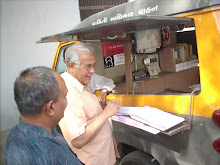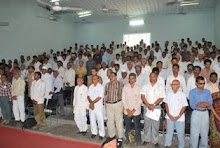Daily Pioneer: Bhopal: Saturday, February 09, 2013.
Highly toxic
chemicals were released during the disposal of industrial waste of now-defunct
Union Carbide by a private firm at Pithampur in Dhar district of Madhya
Pradesh, NGOs alleged citing RTI replies.
Five
organisations working for the survivors of December 1984 gas disaster at a
press conference here on Thursday charged the Madhya Pradesh government of
being silent spectators to the deliberate and repeated poisoning of people in
Pithampur, Indore.
Presenting
documents obtained under the RTI Act, the organizations said that high levels
of Dioxins and Furans were released from the Ramky waste incinerator during
four trial runs from July 2010 to June 2012. According to these documents the
levels of Dioxins and Furans in Pithampur were 68 to 267 times higher than the
permissible limit.
The
organizations said that according to the World Health Organization even minute
quantities of Dioxins cause cancers, disrupt hormones, damage the reproductive
system and weaken people’s ability to fight diseases.
The
organizations pointed out that the incinerator at the Ramky waste treatment
facility is not equipped to measure or prevent the escape of Dioxins and Furans
and the MP Pollution Control Board had directed its closure in August 2012.
However, the Central Pollution Control Board (CPCB) overrode the order of MPPCB
and yet another trial run was carried out in January 2013.
According to
the organizations, the Ramky waste treatment facility violates the Hazardous
Waste Management Rules of 1989 stipulated by the CPCB itself. As per these
Rules a waste treatment facility has to be at least 500 metres away from a
human settlement whereas the Ramky incinerator is situated less than 200 metres
away from the village Tarpura. The organizations pointed out that the documents
obtained under the RTI Act show that high levels of pollutants from the
incinerator were found in village Tarpura last year.
The
organizations stated that because of the high organochlorine content of the
Union Carbide waste, they were likely to emit higher volumes of Dioxins and
Furans on incineration. They said that while there was no incinerator in India
that could handle the Union Carbide waste, the Ramky incinerator was the worst
choice.














































































